Al pastor tacos are a beloved street food in Mexico and are enjoyed for their bold and savory flavors. The combination of the tender, marinated meat and the sweetness from the pineapple creates a harmonious balance of flavors, making this al pastor recipe a favorite among taco enthusiasts around the world.
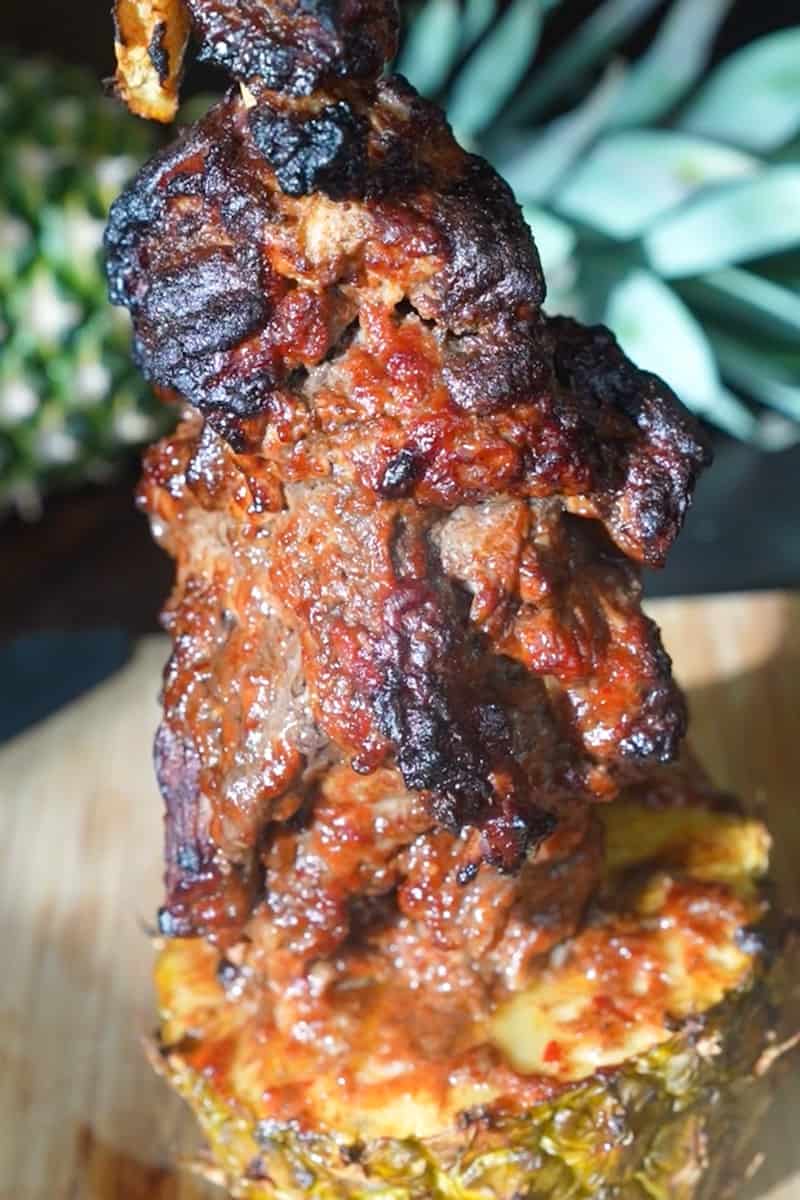
You can recreate the essence of Al Pastor at home, even if you don't have a vertical rotisserie. This recipe simplifies the process, allowing you to achieve authentic flavors in your own kitchen. Al Pastor tacos are highly customizable. You can garnish them with fresh cilantro, diced onions, squeeze of lime, and your choice of salsa or hot sauce, making each bite uniquely your own.
Al Pastor tacos are ideal for gatherings and parties. Your guests will be wowed by the explosion of flavors and the fun of assembling their own tacos. The sweet and tangy notes from the pineapple juice perfectly balance the savory, spiced pork. It's a harmonious flavor combination that's both comforting and exciting.
If you love this recipe, you need to try my Pastel Azteca Recipe or my Birria Tacos Recipe.
Jump to:
- What is Al Pastor?
- Why you will love this recipe
- Al Pastor Recipe Ingredients
- How to make Al Pastor
- What to serve with my Al Pastor Recipe
- Substitutions
- Al Pastor Recipe Variations
- What does al pastor mean?
- What makes al pastor special?
- Does al pastor always have pineapple?
- What is al pastor sauce made of?
- Equipment
- How to store Al Pastor
- Al Pastor Recipe Top tips
- Al Pastor Recipe
- Food safety
What is Al Pastor?
Al pastor is a popular Mexican dish that consists of thinly sliced marinated pork that is typically cooked on a vertical rotisserie, similar to how shawarma or gyro meat is prepared. The term "al pastor" translates to "shepherd style" in Spanish, indicating its historical association with the preparation of meat on a rotating spit.
The dish has a fascinating culinary history. Al pastor was influenced by Lebanese immigrants who brought their tradition of cooking marinated, spit-roasted meat with them to Mexico. Over time, it merged with local Mexican flavors and ingredients, resulting in the creation of what we now know as al pastor.

Why you will love this recipe
- Rich History and Flavor Fusion: Al Pastor is a dish with a fascinating history, blending Mexican and Lebanese culinary traditions. It's a delightful fusion of flavors that will take your taste buds on a flavorful journey.
- Deliciously Tender Meat: The marinated pork in this recipe results in incredibly tender and flavorful meat. The spices, achiote paste, and pineapple juice work their magic to create a mouthwatering experience.
- Versatile: While traditionally made with pork, this recipe can be adapted to your preferences. You can use chicken, beef, or even make it vegetarian with grilled vegetables.
Al Pastor Recipe Ingredients
You'll only need a few simple ingredients to make this. The exact measurements are listed in the recipe card below. Here's an overview of what you'll need:
- Pork shoulder
- Guajillo chilies
- Onion
- Garlic
- Pineapple chunks
- White vinegar
- Achiote paste
- Ground cumin
- Oregano
- Paprika
- Salt and pepper
- Pineapple
- Wooden Skewers
- Corn tortillas
- Cilantro
- Limes
- Your favorite salsa
See recipe card for Al Pastor Recipe quantities.
How to make Al Pastor

Bring water to a boil and boil the dried chilies until fragrant, about 7 minutes. Place the boiled chilies, onion, garlic, pineapple chunks, lime juice, achiote paste, cumin, oregano, paprika, salt, and pepper in a blender or food processor. Blend until you have a smooth paste. Add a bit of the water from the boiled chilies to smooth out. Place the thinly sliced pork in a large bowl or a resealable plastic bag.

Pour the marinade over the pork and make sure all pieces are well coated. Seal the bag or cover the bowl and refrigerate for at least 2 hours, preferably overnight, to let the flavors develop. Take the pork out and bring to room temperature.

Cut the pineapple about 2-3 inches from the bottom. Using the bottom half, stab four skewers into the core of that pineapple (cutside up). Make sure they are very intact. Take a smaller piece of pork and thread the pork into the skewers. Continue with smaller pieces and work your way in with bigger pieces. You will be creating a trompo with the pork. At the top of the skewer, add a slice or two of pineapple.

Preheat your oven to 350°F. Place the trompo on a roasting rack in a baking sheet. Add the trompo into the oven and bake for 1.5 hours. Turn every 30 minutes, carefully. Feel free to broil for 2 minutes at the end for extra crispiness. Remove and let rest for 10 minutes. Warm the corn tortillas on the grill or in a skillet. Slice the cooked al pastor pork vertically. Assemble your tacos with a few slices of al pastor, pineapple, fresh cilantro, chopped onion, a squeeze of lime juice, and salsa.
Hint: Slice the meat thinly (about ¼ inch thick) to ensure it cooks evenly and quickly.
What to serve with my Al Pastor Recipe
- Mexican Rice: A classic choice, Mexican rice (known as "arroz rojo" or "Spanish rice") is a flavorful side dish made with rice, tomatoes, onions, and spices. It pairs wonderfully with the savory Al Pastor.
- Refried Beans: Creamy refried beans are a staple in Mexican cuisine. They provide a comforting, protein-rich side that complements the bold flavors of Al Pastor.
- Guacamole: Creamy, homemade guacamole made with ripe avocados, tomatoes, onions, and lime juice adds a refreshing contrast to the richness of the Al Pastor. Serve it with tortilla chips or as a topping for your tacos.
- Tortilla Chips: A basket of crispy tortilla chips alongside some salsa or guacamole makes for a great appetizer or snack before or alongside your Al Pastor tacos.
- Corn on the Cob: Grilled or boiled corn on the cob slathered with butter, Mexican crema, and a sprinkle of chili powder is a classic Mexican street food side. Check out my Mexican Corn Recipe.
If you love this recipe, you need to try my Birria Empanadas Recipe.
Substitutions
- Pork Substitute: You can use chicken, beef, or even shrimp as a substitute for pork. Marinate and cook these proteins in the same way as you would with pork.
- Dried Chilies Substitution: If you can't find guajillo and ancho chilies, you can use other dried chilies like New Mexico, pasilla, or even chipotle peppers for a smoky flavor. Adjust the quantity to your desired level of heat and flavor.
- Achiote Paste Alternative: Achiote paste provides a unique flavor and color to Al Pastor. If you don't have it, you can replace it with a mixture of paprika, ground annatto seeds (if available), and a bit of vinegar. This won't be an exact match but will still provide color and some flavor.
- Pineapple Juice Replacement: Pineapple juice adds sweetness and acidity to the marinade. If you don't have it, you can use orange juice or a combination of orange and lime juice as a substitute.
- Vinegar Swap: If white vinegar is not available, you can use apple cider vinegar, rice vinegar, or white wine vinegar as alternatives.
- Spice Alternatives: While the traditional spices are essential for authentic flavor, you can adapt the recipe by using cumin, paprika, and Mexican oregano as substitutes if you don't have the exact spices on hand.
- Tortilla Options: If you can't find corn tortillas, flour tortillas can work as a substitute. However, corn tortillas are more traditional and provide a distinct texture and flavor.
- Topping Variations: Get creative with your toppings based on what you have. If you don't have cilantro, you can use parsley. Onions can be replaced with scallions or shallots. Lime wedges can be swapped with lemon wedges. Experiment with what's available.
- Cooking Method Adjustment: If you don't have access to a vertical rotisserie or grill, you can cook the marinated meat and pineapple on a stovetop grill pan, in the oven, or even on an outdoor grill.

Al Pastor Recipe Variations
- Seafood Al Pastor: Use shrimp, fish fillets, or scallops instead of pork. Adjust the marination time and cooking method accordingly. Seafood Al Pastor pairs wonderfully with a mango salsa.
- Al Pastor Quesadillas: Make cheesy quesadillas using Al Pastor meat, pineapple, and your favorite cheese. Serve with sour cream or guacamole for dipping.
- Al Pastor Burritos or Bowls: Stuff your Al Pastor into burritos with rice, beans, cheese, and your favorite toppings. Alternatively, serve it over a bowl of rice or quinoa with roasted vegetables and a drizzle of Al Pastor sauce. Check out my Easy Mexican Quinoa Bowl.
What does al pastor mean?
"Al pastor" refers to a Mexican cooking technique, and the term translates to "in the style of the shepherd" in English. This style of cooking is commonly used for preparing meat, particularly pork. The dish is often associated with tacos.
Traditional al pastor involves marinating thin slices of pork in a combination of dried chilies, spices, and pineapple. The marinated meat is then stacked on a vertical rotisserie, similar to the method used for Middle Eastern shawarma or Greek gyros. As the meat cooks on the rotating spit, the outer layer gets crispy, and the inside remains tender and flavorful.
What makes al pastor special?
- Flavorful Marinade: The key to al pastor's unique taste lies in its marinade. The meat, traditionally pork, is marinated in a mixture of dried chilies, spices, vinegar, and often pineapple juice. This combination imparts a complex and savory-sweet flavor to the meat.
- Vertical Rotisserie Cooking: The method of cooking al pastor on a vertical rotisserie, known as a trompo, is distinctive. This technique allows the meat to cook evenly while creating a crispy, caramelized exterior. The vertical rotisserie cooking method was influenced by Middle Eastern and Mediterranean styles, brought to Mexico by Lebanese immigrants.
- Influence of Pineapple: Pineapple is a crucial component of the marinade, contributing both sweetness and acidity. Some variations of al pastor involve placing a pineapple slice on top of the meat on the rotisserie, allowing its juices to baste the cooking meat.
Does al pastor always have pineapple?
While pineapple is a common and traditional ingredient in al pastor, it's not an absolute requirement. Different regions and cooks may have variations of the recipe, and some may choose to omit pineapple for various reasons, such as personal preference or dietary considerations.
The use of pineapple in al pastor serves multiple purposes. It contributes sweetness and acidity to the marinade, helping to tenderize the meat and providing a unique flavor profile. Additionally, some variations involve placing a pineapple slice on top of the meat on the vertical rotisserie, allowing the fruit's juices to baste the cooking meat.
What is al pastor sauce made of?
Al pastor sauce, a crucial element in creating the mouthwatering flavor of this iconic Mexican dish, is a carefully crafted mixture of diverse ingredients. Dried chilies like guajillo, ancho, and achiote bring smokiness and a rich color, while vinegar tenderizes the meat and adds a tangy kick. Achiote paste, derived from annatto seeds, contributes both a vibrant hue and an earthy essence. Garlic, cumin, and Mexican oregano provide layers of aromatic complexity, enhancing the overall depth of the sauce. Pineapple juice not only imparts sweetness but also balances the acidity, and some recipes even include chunks of fresh pineapple. Onions, citrus juice, salt, and pepper round out the flavors, ensuring a well-rounded and savory marinade.
Equipment
To make this Al Pastor Recipe, you will need:
- Blender or Food Processor: You'll need this to create the marinade by blending together the dried chilies, spices, and other ingredients. A high-quality blender or food processor can make this process easier.
- Mixing Bowls: You'll require mixing bowls for marinating the meat and mixing the Al Pastor marinade.
- Cutting Board and Sharp Knife: A cutting board and a sharp knife are essential for slicing and prepping the meat, onions, garlic, and any other ingredients.
- Grill, Oven, or Stovetop Grill Pan: Traditionally, Al Pastor is cooked on a vertical rotisserie. However, if you don't have one, you can use a regular grill, an oven, or a stovetop grill pan to cook the marinated meat and pineapple slices.
- Skewers: If you don't have a spit, wooden or metal skewers are essential for threading the marinated meat and pineapple.
- Baking Sheet or Drip Tray: If you're cooking in the oven or on a grill, a baking sheet or drip tray underneath will catch any drips and make cleanup easier.
- Tongs: Tongs are handy for turning the meat and pineapple while cooking.
- Aluminum Foil: This can be used to line your baking sheet or grill grates to prevent sticking and make cleanup easier.
- Serving Platter: A platter or plate for arranging and serving your Al Pastor.
- Tortilla Warmer or Towels: To keep your tortillas warm while you prepare and assemble your Al Pastor tacos.
- Serving Utensils: Such as a spoon or tongs for transferring the cooked meat and pineapple to the serving platter.
- Optional: Vertical Rotisserie: If you have access to a vertical rotisserie, it can provide the most authentic cooking experience.
- Optional: Thermometer: A meat thermometer can help ensure your meat is cooked to the right temperature, especially if you're using an oven or grill.

How to store Al Pastor
Storing my Al Pastor Recipe properly is important to maintain its flavor and safety. Here's how to store Al Pastor:
- Cool Down Quickly: After cooking, allow the Al Pastor to cool down to room temperature. Do not leave it out at room temperature for more than 2 hours to avoid bacterial growth.
- Refrigeration: If you plan to consume the Al Pastor within a few days, you can refrigerate it. Place the cooked Al Pastor in an airtight container or wrap it tightly in aluminum foil or plastic wrap. Refrigerate at or below 40°F (4°C).
- Label and Date: If you have multiple containers or leftovers from different days, label and date them to keep track of freshness.
- Use Within 3-4 Days: Cooked Al Pastor can be safely stored in the refrigerator for 3-4 days. Beyond this time, its quality may deteriorate, and the risk of spoilage increases.
- Freezing (Optional): If you want to store Al Pastor for a longer period, freezing is an option. Place the cooled Al Pastor in an airtight container or resealable freezer bags, removing as much air as possible to prevent freezer burn. Label and date the container or bag. Frozen Al Pastor can be stored for up to 2-3 months.
- Thawing Frozen Al Pastor: When ready to use frozen Al Pastor, transfer it to the refrigerator and allow it to thaw overnight. This gradual thawing method ensures that the meat remains safe and maintains its texture.
- Reheating: To reheat Al Pastor, you can use a microwave, stovetop, or oven. Be sure to heat it thoroughly to an internal temperature of 165°F (74°C) to ensure it's safe to eat.
Al Pastor Recipe Top tips
- Choose Quality Meat: Start with high-quality pork shoulder or pork butt. Look for well-marbled meat, as it will be more tender and flavorful.
- Thin Slices: Slice the meat thinly (about ¼ inch thick) to ensure it cooks evenly and quickly.
- Marinate Adequately: Allow the meat to marinate for at least 2 hours, preferably overnight. The longer the marination, the more flavorful your Al Pastor will be.
- Blend Marinade Thoroughly: Ensure your marinade is well-blended and smooth by using a powerful blender or food processor. This helps distribute the flavors evenly.
- Cooking Method: While a vertical rotisserie is traditional, you can achieve great results using a grill, oven, or stovetop grill pan. Just make sure the meat is cooked through and has a slight char.
- Baste with Marinade: During cooking, baste the meat with the marinade or pineapple juice occasionally to keep it moist and infuse more flavor.
- Rest Before Slicing: Allow the cooked Al Pastor to rest for a few minutes before slicing. This helps retain its juices and keeps it tender.
- Warm Tortillas: Warm your corn tortillas before serving. You can do this on the grill, in a dry skillet, or wrapped in foil in a low oven.
- Customize Your Toppings: Don't be afraid to get creative with your toppings. Salsas, pickled onions, and cotija cheese are excellent additions.

Al Pastor Recipe
- Total Time: 3.5 Hours
- Yield: 6 servings 1x
Description
Al pastor tacos are a beloved street food in Mexico and are enjoyed for their bold and savory flavors. The combination of the tender, marinated meat and the sweetness from the pineapple creates a harmonious balance of flavors, making this al pastor recipe a favorite among taco enthusiasts around the world.
Ingredients
- 2-3 pounds of pork shoulder or pork butt, thinly sliced (about ¼ inch thick)
- 3-4 dried guajillo chilies, stemmed and seeded
- 2-3 dried ancho chilies, stemmed and seeded
- 1 small onion, roughly chopped
- 4 cloves of garlic
- 1 cup pineapple chunks
- Juice of 2 limes
- 2 tablespoons achiote paste
- 1 teaspoon ground cumin
- 1 teaspoon dried oregano
- 1 teaspoon paprika
- Salt and pepper to taste
- 1 ripe pineapple
- Wooden skewers, soaked in water for 30 minutes
- Small corn tortillas
- Chopped fresh cilantro
- Chopped onion
- Lime wedges
- Salsa (salsa verde or your favorite hot sauce)
Instructions
- Bring water to a boil and boil the dried chilies until fragrant, about 7 minutes.
- Place the boiled chilies, onion, garlic, pineapple chunks, lime juice, achiote paste, cumin, oregano, paprika, salt, and pepper in a blender or food processor. Blend until you have a smooth paste. Add a bit of the water from the boiled chilies to smooth out.
- Place the thinly sliced pork in a large bowl or a resealable plastic bag.
- Pour the marinade over the pork and make sure all pieces are well coated.
- Seal the bag or cover the bowl and refrigerate for at least 2 hours, preferably overnight, to let the flavors develop.
- Take the pork out and bring to room temperature.
- Cut the pineapple about 2-3 inches from the bottom. Using the bottom half, stab four skewers into the core of that pineapple (cutside up). Make sure they are very intact.
- Take a smaller piece of pork and thread the pork into the skewers. Continue with smaller pieces and work your way in with bigger pieces. You will be creating a trompo with the pork. At the top of the skewer, add a slice or two of pineapple.
- Preheat your oven to 350°F.
- Place the trompo on a roasting rack in a baking sheet.
- Add the trompo into the oven and bake for 1.5 hours. Turn every 30 minutes, carefully. Feel free to broil for 2 minutes at the end for extra crispiness. Remove and let rest for 10 minutes.
- Warm the corn tortillas on the grill or in a skillet.
- Slice the cooked al pastor pork vertically.
- Assemble your tacos with a few slices of al pastor, pineapple, fresh cilantro, chopped onion, a squeeze of lime juice, and salsa.
Notes
- Choose Quality Meat: Start with high-quality pork shoulder or pork butt. Look for well-marbled meat, as it will be more tender and flavorful.
- Thin Slices: Slice the meat thinly (about ¼ inch thick) to ensure it cooks evenly and quickly.
- Marinate Adequately: Allow the meat to marinate for at least 2 hours, preferably overnight. The longer the marination, the more flavorful your Al Pastor will be.
- Blend Marinade Thoroughly: Ensure your marinade is well-blended and smooth by using a powerful blender or food processor. This helps distribute the flavors evenly.
- Cooking Method: While a vertical rotisserie is traditional, you can achieve great results using a grill, oven, or stovetop grill pan. Just make sure the meat is cooked through and has a slight char.
- Baste with Marinade: During cooking, baste the meat with the marinade or pineapple juice occasionally to keep it moist and infuse more flavor.
- Rest Before Slicing: Allow the cooked Al Pastor to rest for a few minutes before slicing. This helps retain its juices and keeps it tender.
- Warm Tortillas: Warm your corn tortillas before serving. You can do this on the grill, in a dry skillet, or wrapped in foil in a low oven.
- Customize Your Toppings: Don't be afraid to get creative with your toppings. Salsas, pickled onions, and cotija cheese are excellent additions.
- Prep Time: 2 Hours
- Cook Time: 1.5 Hours
- Category: Dinner
- Method: Cooking
- Cuisine: Mexican
Food safety
- Cook to a minimum temperature of 165 °F (74 °C)
- Do not use the same utensils on cooked food, that previously touched raw meat
- Wash hands after touching raw meat
- Don't leave food sitting out at room temperature for extended periods
- Never leave cooking food unattended
- Use oils with high smoking point to avoid harmful compounds
- Always have good ventilation when using a gas stove



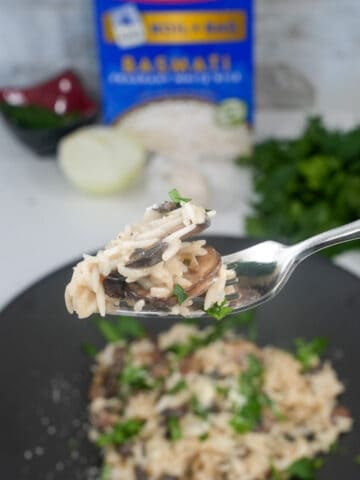
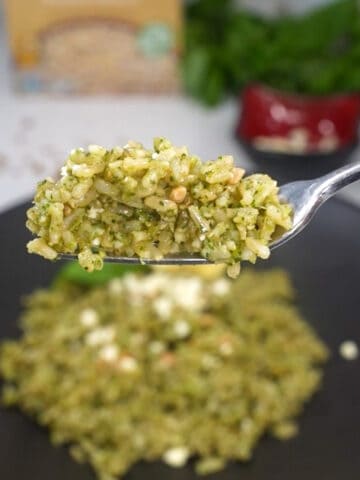
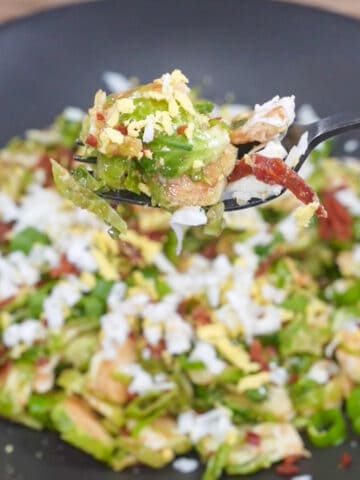
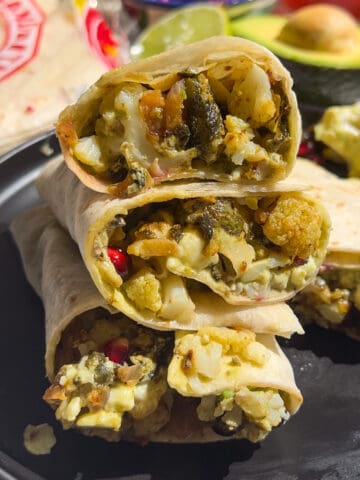
Leave a Reply